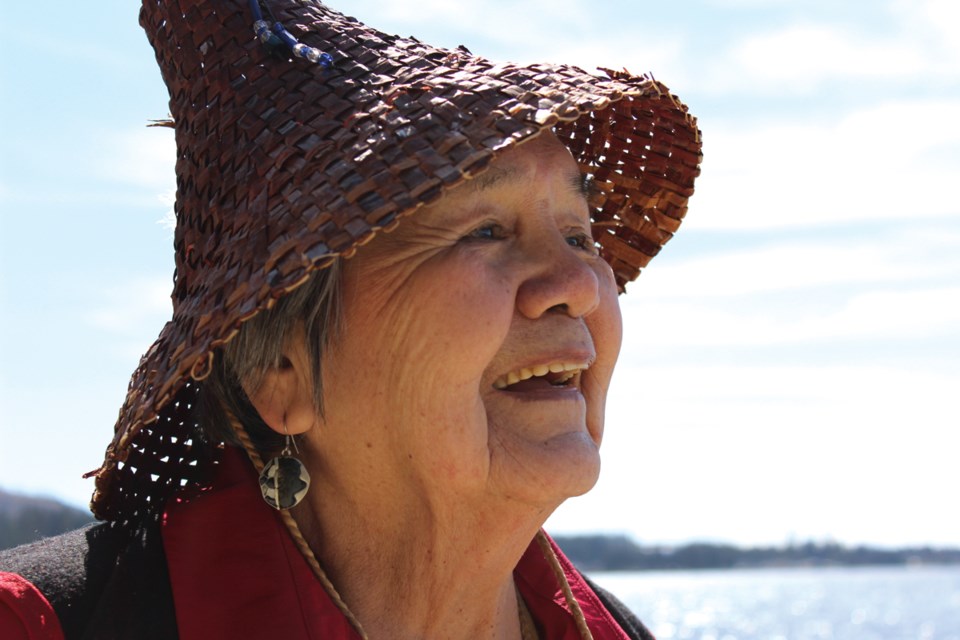As shíshálh elder Xwu’p’a’lich Barbara Higgins approaches the second printing of her book of stories, she stops to reflect on her purpose.
“My book was meant to be,” she tells Coast Reporter, and she gives thanks to the Creator for its inspiration. The title really says it all: Etched in My Memory – My Life as a Shíshálh Rememberer.
Higgins is now 85. When she was just seven years old, she recalls a gathering on a beach of aunties, uncles and grannies, including her grandfather Chief Dan Paul (possibly an illegal act for that time when native people were prohibited from gathering). She was gently passed around the circle and made to understand that she would now protect and remember the stories of her people.
She was taught well at her first home in Narrows Arm, how to live off the land and live in harmony with nature. Apart from a rare visit to Sechelt, usually at Easter with her mother, a devout Catholic, she stayed at home. She did not go to the residential schools like so many other children, but was hidden from the authorities and later went to public school to learn the ways of white people. She has always lived in the two camps.
Higgins has been writing since she was in Grade 5 but nothing was published until 1990 when she submitted a story to Writing the Circle: Native Women of Western Canada, an anthology. That was the start of over 250 stories, many of which found their way into Etched in My Memory. The book has proved so popular on the Coast that 700 copies have been sold so far, and Higgins and her book designer, Justin French, are planning a big community event, a second printing party to be held on Sunday, March 25 at 2 p.m. at the Sechelt Band Hall, 5532 Xenichen Ave.
Fans of Higgins will not hear her speak at the Festival of the Written Arts this year. She is not upset about it, though it was a wish of hers.
“They [the Festival] were so good to us when we met,” she said. It’s not discrimination against First Nations writers – Higgins is very clear about that – but because it is Festival policy to exclude authors of self-published books. They cite a number of reasons in their website guidelines, including that the Festival has no means of assessing quality, and that funders do not support the presentation of self-published authors.
So why did Higgins self-publish? French, her graphics and book designer, points out that the stories are part of an oral tradition and so should be written in Higgins’ own words, rather than be subject to an edit that lacks understanding of cultural significance.
Higgins is at work on her second book while still touring and presenting her first. She recently attended a ceremony in Stanley Park to unveil a sculpture by master carver Ts’uts’umutl Luke Marston as a tribute to his great-great-grandfather known as Portuguese Joe Silvey, who came to the Sunshine Coast around 1858 where he married an ancestor of Higgins. She has also been invited to a gallery in Ladysmith to read from the book and talk about the history of Silvey. The book is being used as a text for a first year English course at Coquitlam College, and she will visit there too. Meanwhile Higgins still goes out in the canoe on a Saturday afternoon with other paddlers when she isn’t preparing for the big second printing party on March 25. She hopes everyone will attend. Find out more at www.creatorstouchpress.com.



